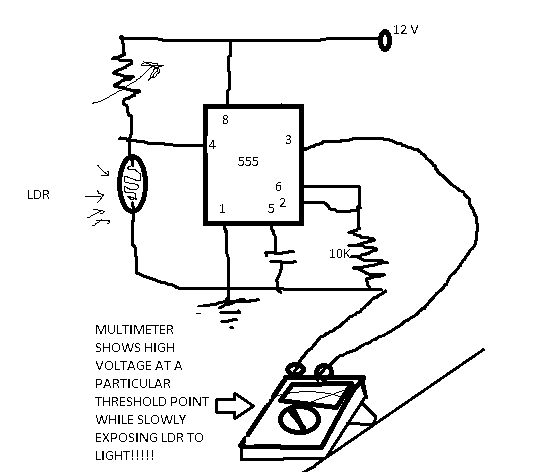vinodstanur
Advanced Member level 3
- Joined
- Oct 31, 2009
- Messages
- 751
- Helped
- 114
- Reputation
- 234
- Reaction score
- 114
- Trophy points
- 1,333
- Location
- Kerala (INDIA)
- Activity points
- 7,054
Hi all, ones while i was making an LDR circuit using 555 (for automatic night lamp), i used the pin number 4(reset) to connect with LDR. Output of ic become high(7v) when the LDR is covered with hand while the output become low (0v) while LDR is exposed to light.
But the interesting thing i noticed is that,when i slowly remove my hand above the LDR then at a particular position (at the stage of threshold point where the o/p is tends to become off, but when i hold my hand at that particular position, THEN I OBSERVED THE VOLTAGE SHOWN IN MY ANALOG MULTIMETER Is ABOVE 1200V AC. (actually very very larger than 1200 volt since the needle strikes the other end very fast)..
I never used any inductor in the circuit!!!
1>without inductance is there any chance of building such a high voltage at 555 output?
2>Is the multimeter coil inductance making this ?
3>or any other reason?
Actually am confused...
But the interesting thing i noticed is that,when i slowly remove my hand above the LDR then at a particular position (at the stage of threshold point where the o/p is tends to become off, but when i hold my hand at that particular position, THEN I OBSERVED THE VOLTAGE SHOWN IN MY ANALOG MULTIMETER Is ABOVE 1200V AC. (actually very very larger than 1200 volt since the needle strikes the other end very fast)..
I never used any inductor in the circuit!!!
1>without inductance is there any chance of building such a high voltage at 555 output?
2>Is the multimeter coil inductance making this ?
3>or any other reason?
Actually am confused...
